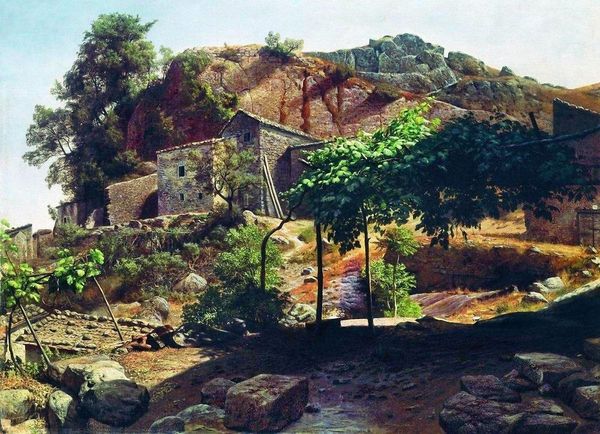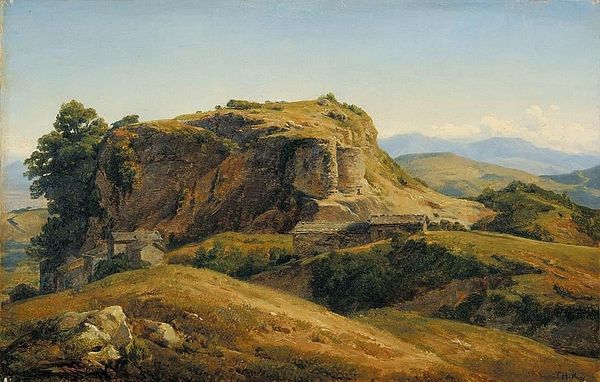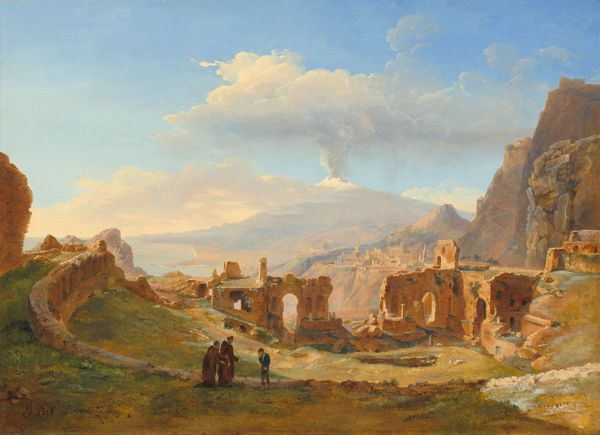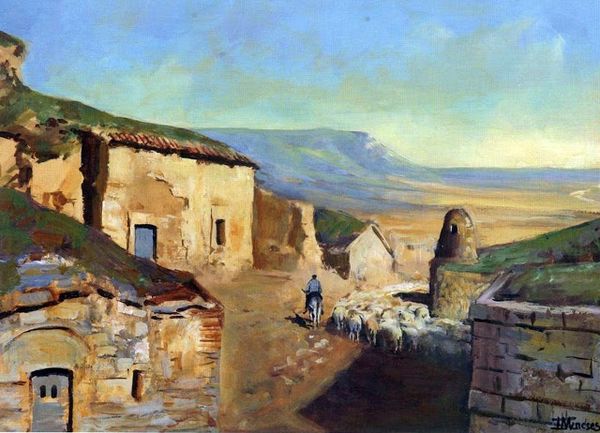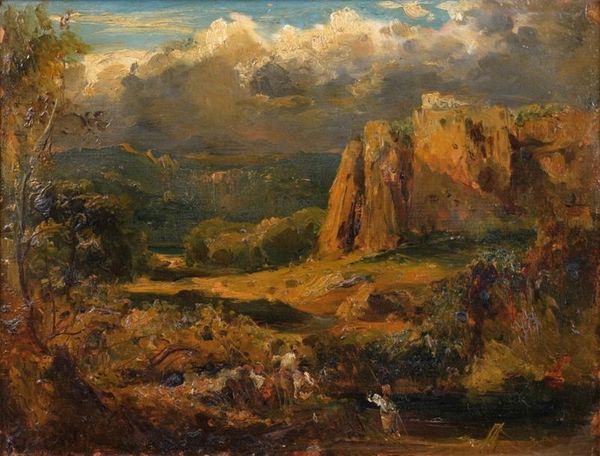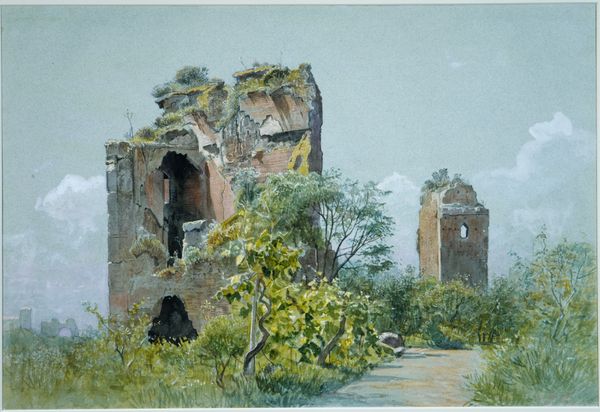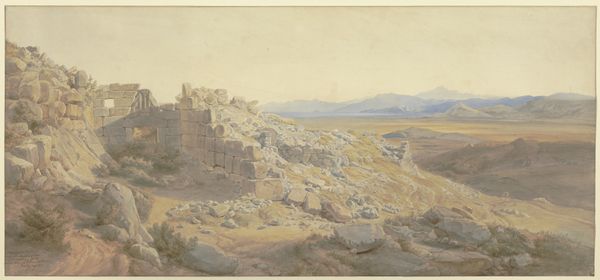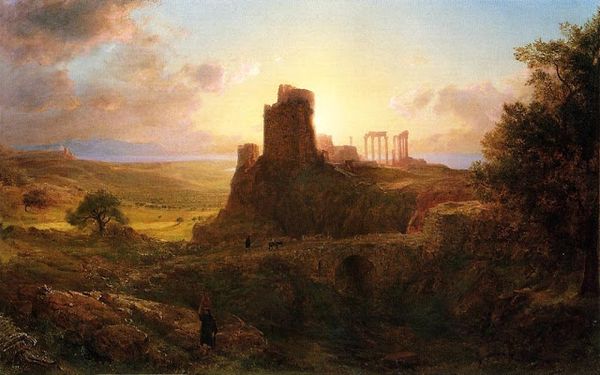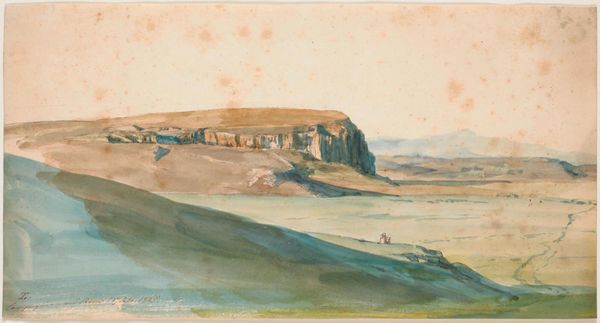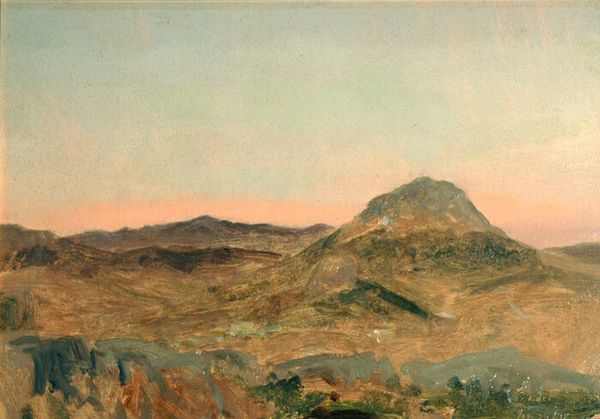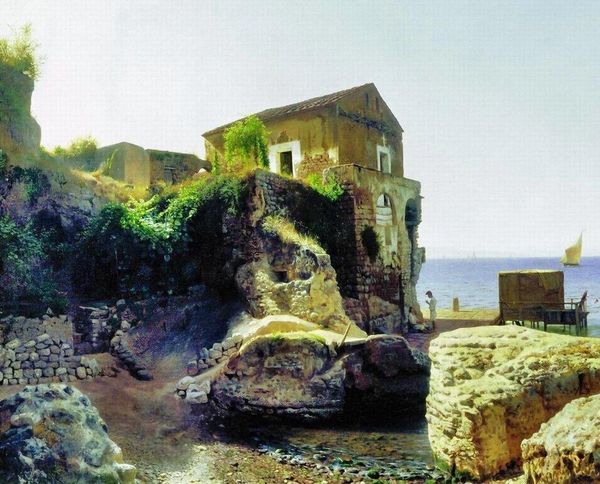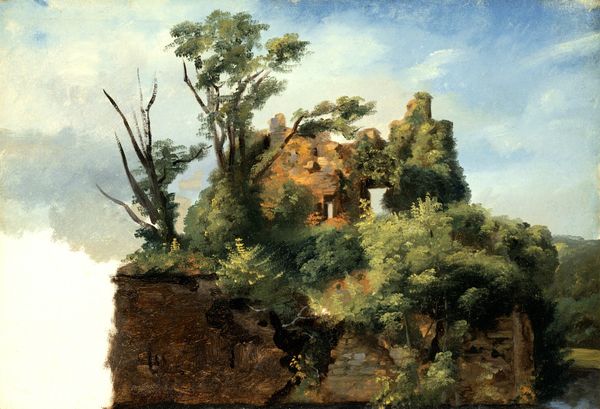
painting, oil-paint
#
tree
#
sky
#
cliff
#
rural-area
#
painting
#
oil-paint
#
landscape
#
house
#
oil painting
#
rock
#
column
#
romanticism
#
cityscape
#
history-painting
#
realism
#
building
Copyright: Public domain
Editor: Here we have Fyodor Bronnikov's "Landscape with Ruins," an oil painting, likely from the 19th century. I’m struck by the contrast between the decay of the ruins in the foreground and the seemingly peaceful landscape stretching out behind it. What’s your take on this piece? Curator: I see in it a reflection on power and its impermanence. These aren't just ruins; they're remnants of a structure, a civilization, that once exerted dominance over this very landscape. Consider how the artist positions them: foregrounded, yet overtaken by nature. It begs the question: what structures, physical or societal, are we building today that will similarly crumble? Editor: So, you’re suggesting that the ruins symbolize the decline of power structures? That's a very contemporary reading. Curator: Absolutely. The landscape isn't merely a backdrop; it's an active force reclaiming what was once taken. Think about the history of land ownership and access, who benefited from the structures, and who was excluded. Bronnikov might be subtly commenting on those power dynamics, even unintentionally. Where do we locate resistance and resilience? Editor: I never considered it from that angle. I was focused on the romantic aspect of ruins and nature, you know, the sublime and all that. Curator: And that reading holds weight, certainly! But romanticism itself can be seen as a reaction to societal changes, a yearning for something "lost" – often a highly selective and biased nostalgia. By situating the painting within broader sociopolitical contexts, we reveal multiple layers of meaning. It asks us to consider whose stories are centered and whose are marginalized, then and now. Editor: That gives me a lot to think about in terms of contemporary interpretations of landscape art. Curator: Exactly. Art like this challenges us to look beyond surface beauty and engage with the deeper implications of what we see and how we see it.
Comments
No comments
Be the first to comment and join the conversation on the ultimate creative platform.
